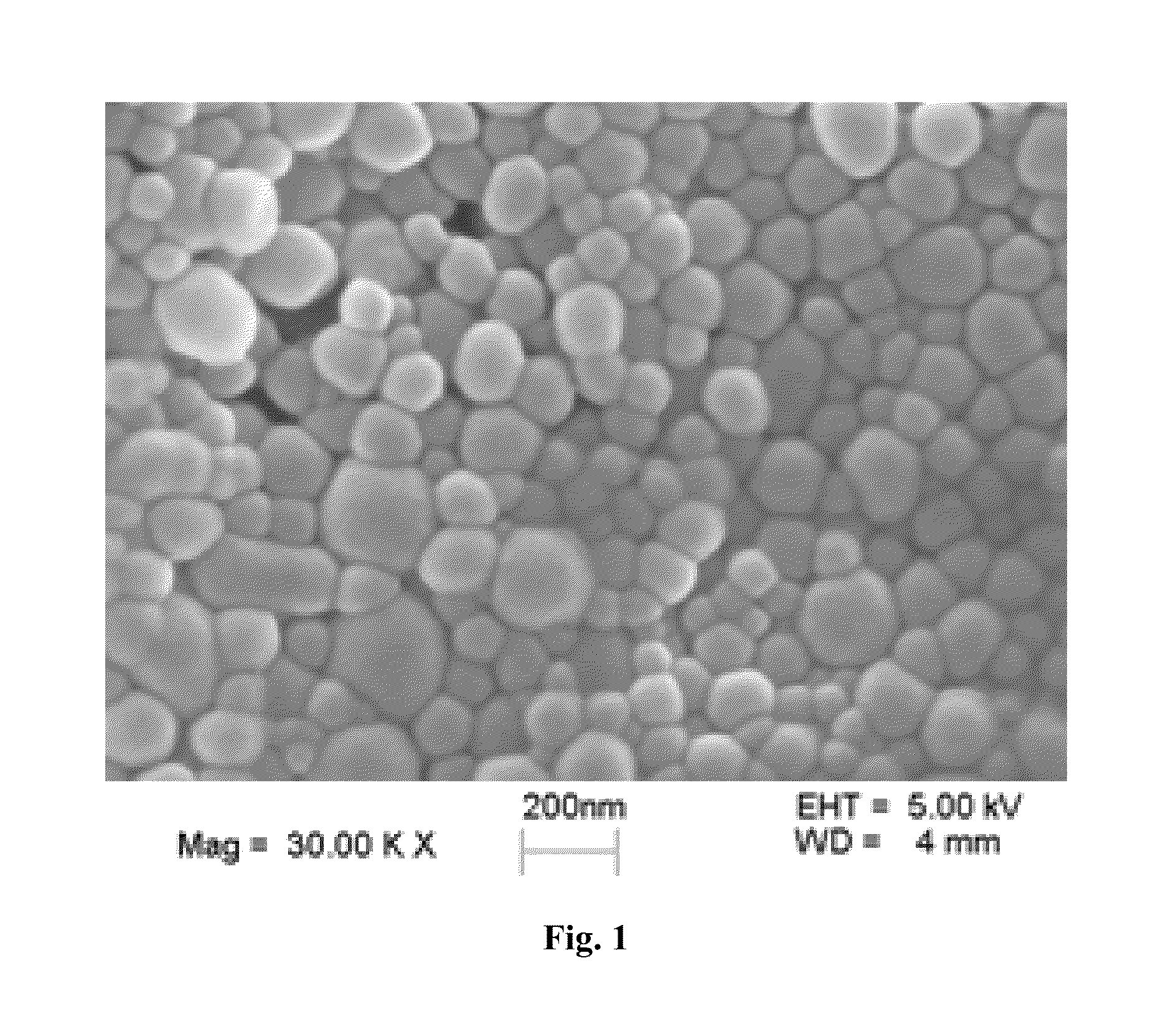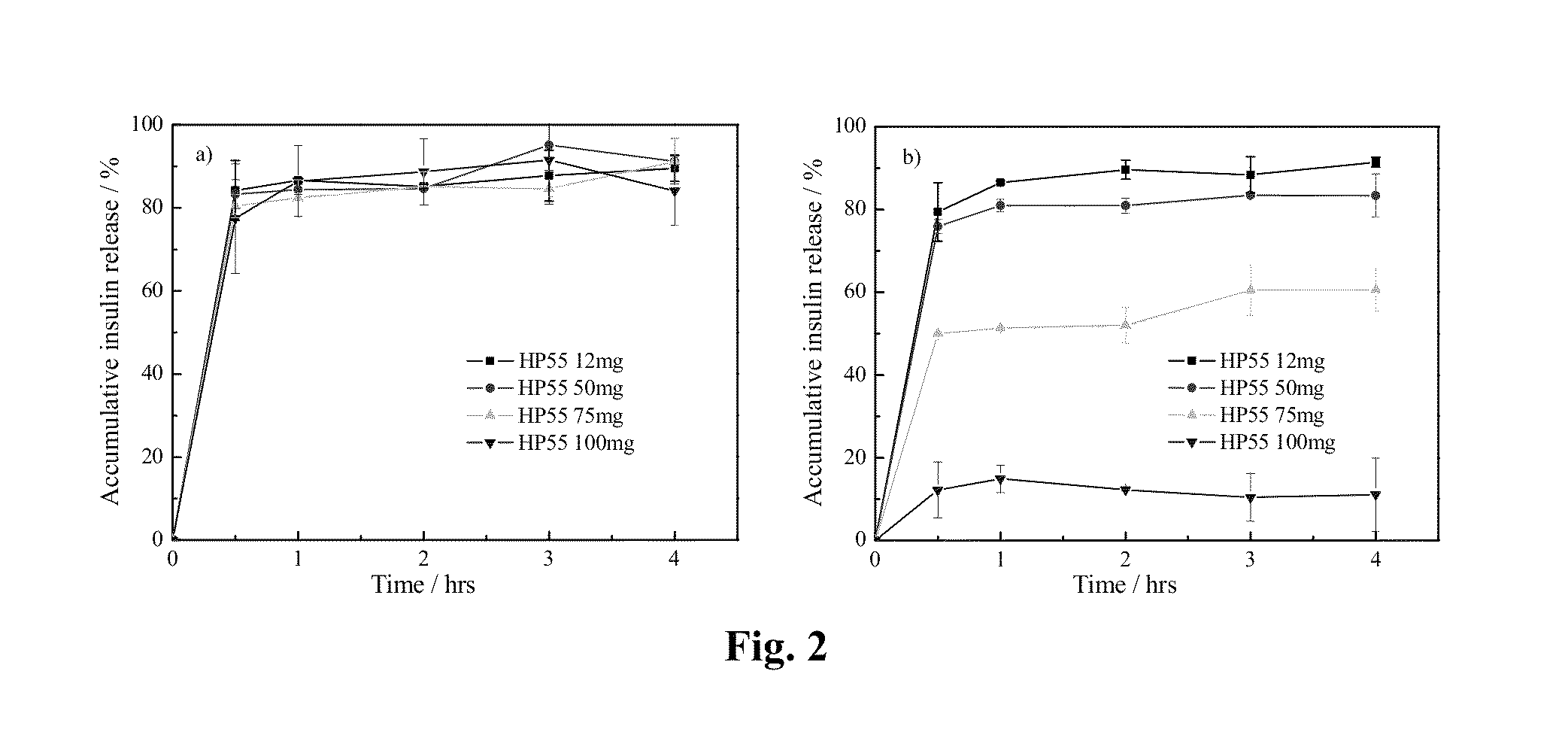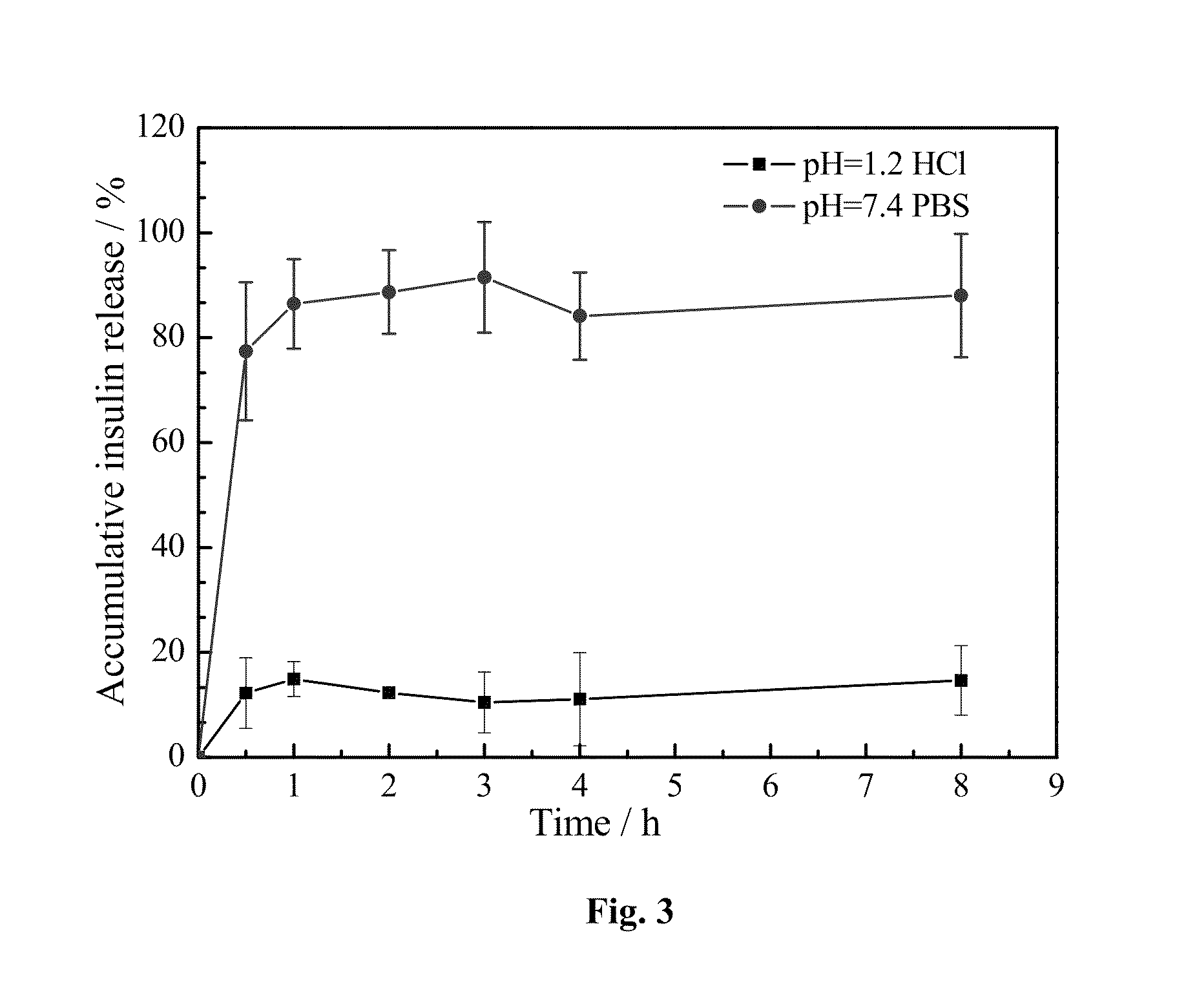pH-sensitive nanoparticles for oral insulin delivery
a nanoparticle and nanoparticle technology, applied in the field of nanoparticles, can solve the problems of inconvenient insulin absorption size, critical global problem of diabetes, and inability to adapt to size, so as to improve the oral bioavailability of diabetes, improve the bioavailability of diabetes, and improve the effect of ph-sensitiv
- Summary
- Abstract
- Description
- Claims
- Application Information
AI Technical Summary
Benefits of technology
Problems solved by technology
Method used
Image
Examples
example 1
Preparation of Insulin-Loaded PLGA / HP55 Nanoparticles
[0023]HP55 as a pH-sensitive material / polymer is used to prepare PLGA / HP55 nanoparticles by two different methodologies. Methodology A: HP55 is dissolved in an organic phase of acetone and alcohol to form a mixture, the mixture is used as the coating of PLGA nanoparticles to form PLGA / HP55 nanoparticles. Methodology B: Both PLGA and HP55 are dissolved in an organic phase of dichloromethane and acetone to form a mixture which is directly used to form PLGA / HP55 nanoparticles.
[0024]
TABLE 1Way of adding HP55Methodology AMethodology Bparticle size, nm303.8 ± 25.4181.9 ± 19.0encapsulation74.54 ± 1.0194.25 ± 1.24efficiency, %
[0025]As shown in Table 1, the encapsulation efficiency of nanoparticles by Methodology B is higher than that by Methodology A. The reasons for lower encapsulation efficiency by Methodology A are: (i) insulin easily spreads into an external water phase during long periods of magnetic stirring, and (ii) part of HP55 i...
example 2
Characterization of Insulin-Loaded PLGA / HP55 Nanoparticles
[0027]The morphological examination of the insulin-loaded PLGA / HP55 nanoparticles is performed by studying their SEM image as shown in FIG. 1. The product is white fine powder. The prepared PLGA / HP55 nanoparticles from Methodology B in Example 1 have a mean particles size 181.9±19.0 nm with a PDI 0.093±0.031. The insulin loading efficiency is 90.85±1.09% (not determined from FIG. 1). The insulin-loaded PLGA / HP55 nanoparticles prepared by the multiple emulsions solvent evaporation method, that is the double emulsion used in the method of the present invention, have a high drug loading, high encapsulation efficiency and small size.
example 3
In Vitro Insulin Release Study
[0028]The amount of HP55 coated on the PLGA / HP55 nanoparticles would affect the pH-sensitivity of the PLGA / HP55 nanoparticles. Thus, the effect of different amounts of HP55 in the pH-sensitivity of the PLGA / HP55 nanoparticles is determined by an in vitro insulin release study. The effect of different amount of HP55 on the release properties of insulin is evaluated in a simulated gastrointestinal fluid. FIG. 2 shows the in vitro release rate of insulin from nanoparticles at different HP55 amounts in solutions having pH=7.4 PBS (a) and pH=1.2 HCl (b), respectively.
[0029]PLGA / HP55 nanoparticles with different amounts of HP55 release more than 75% insulin in pH=7.4 PBS. When both PLGA and HP55 are dissolved in an organic solvent to entrap insulin, the interaction between HP55 and insulin is stronger than that between PLGA and insulin; most insulin molecules tend to disperse in HP55 rather than in PLGA. In pH=7.4 PBS, the carboxyl group (—COOH) of HP55 loses...
PUM
| Property | Measurement | Unit |
|---|---|---|
| molecular weight | aaaaa | aaaaa |
| molecular weight | aaaaa | aaaaa |
| pH | aaaaa | aaaaa |
Abstract
Description
Claims
Application Information
 Login to View More
Login to View More - R&D
- Intellectual Property
- Life Sciences
- Materials
- Tech Scout
- Unparalleled Data Quality
- Higher Quality Content
- 60% Fewer Hallucinations
Browse by: Latest US Patents, China's latest patents, Technical Efficacy Thesaurus, Application Domain, Technology Topic, Popular Technical Reports.
© 2025 PatSnap. All rights reserved.Legal|Privacy policy|Modern Slavery Act Transparency Statement|Sitemap|About US| Contact US: help@patsnap.com



